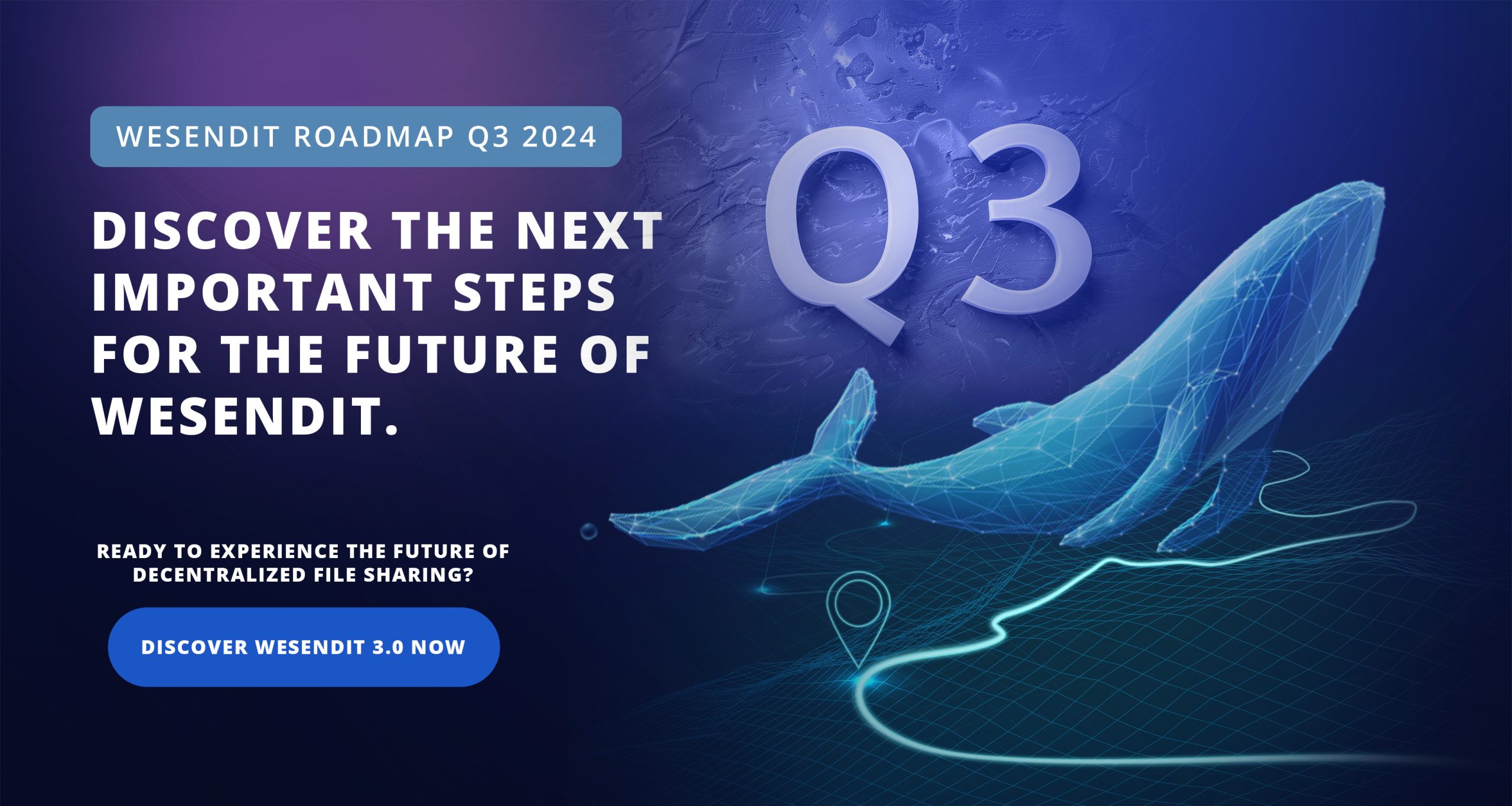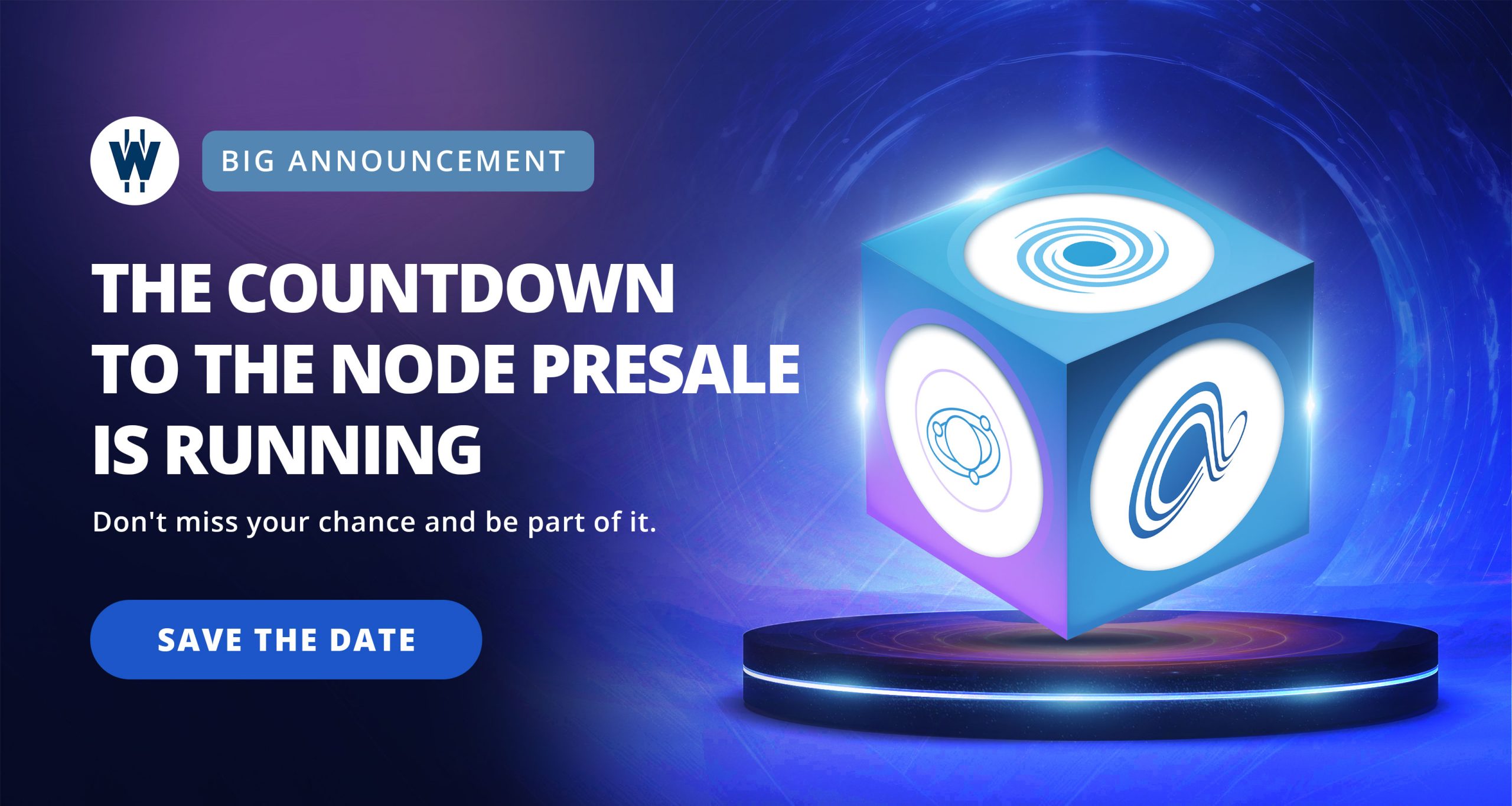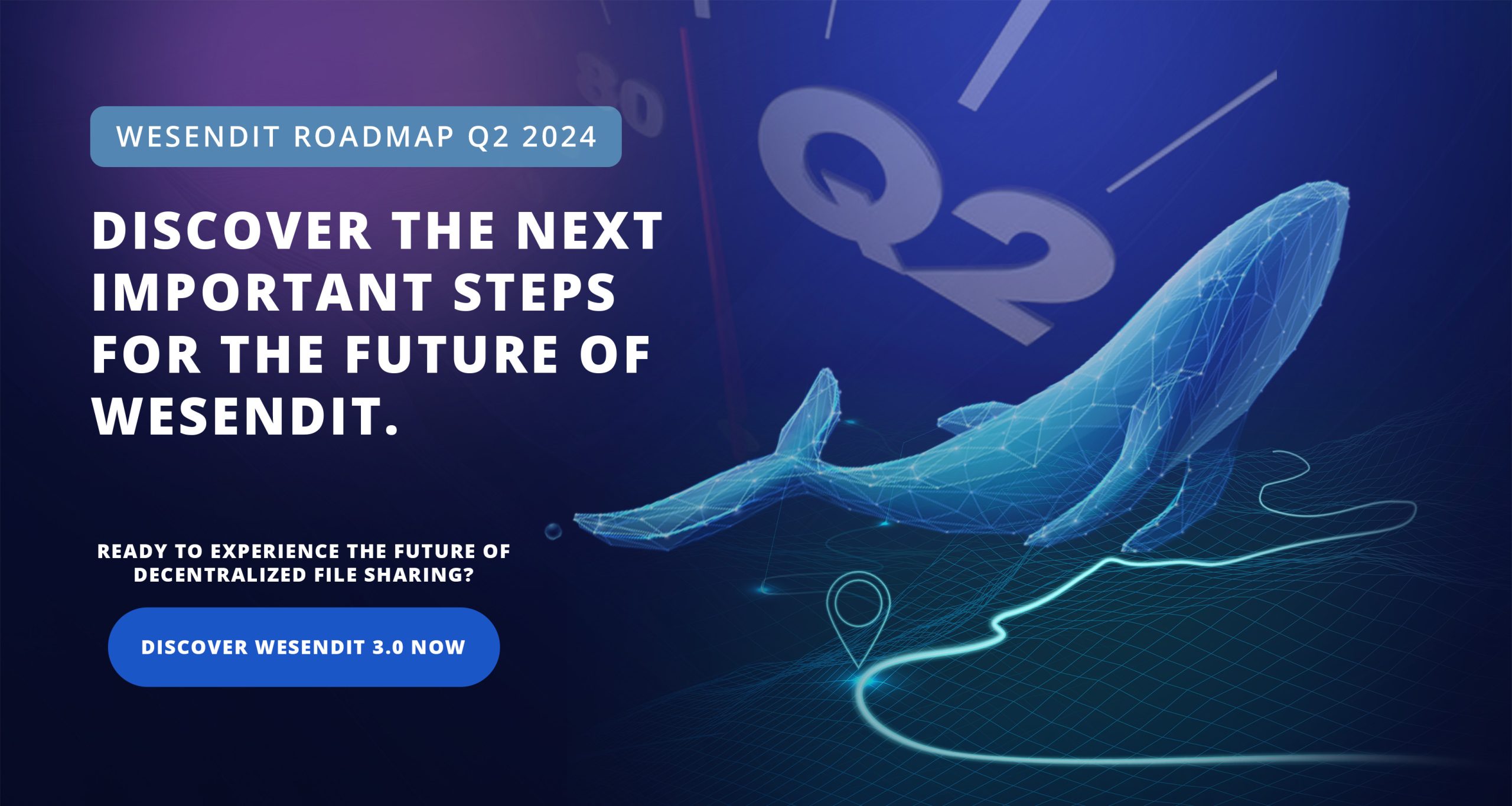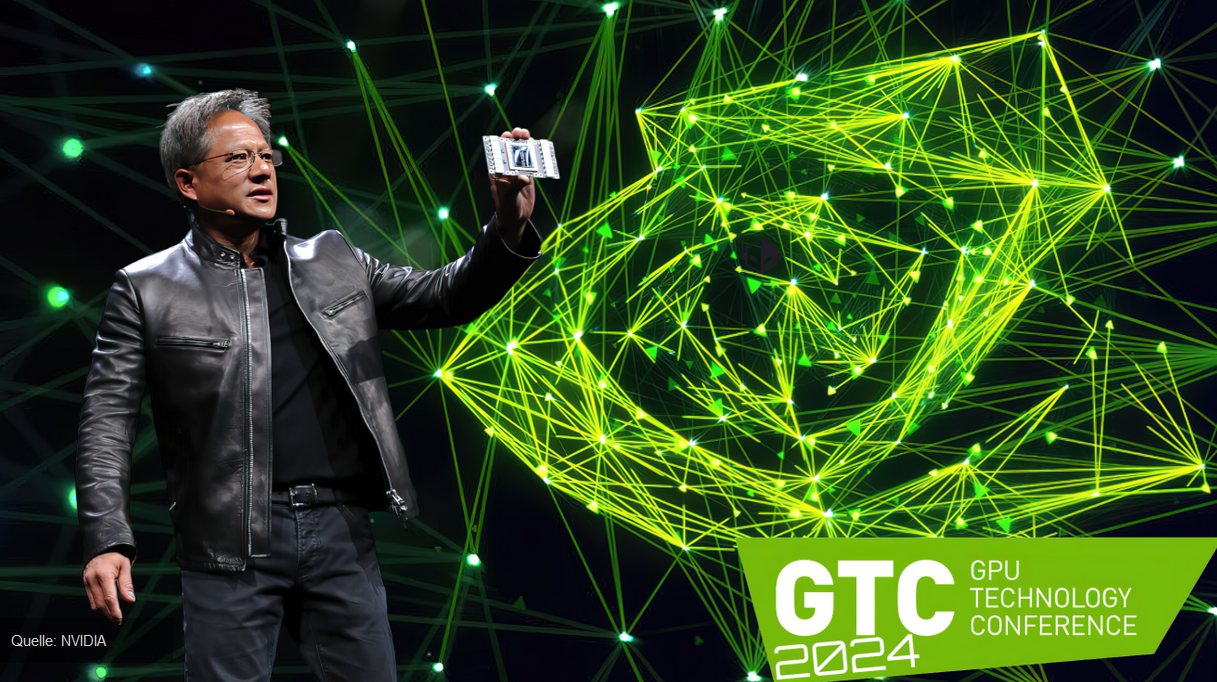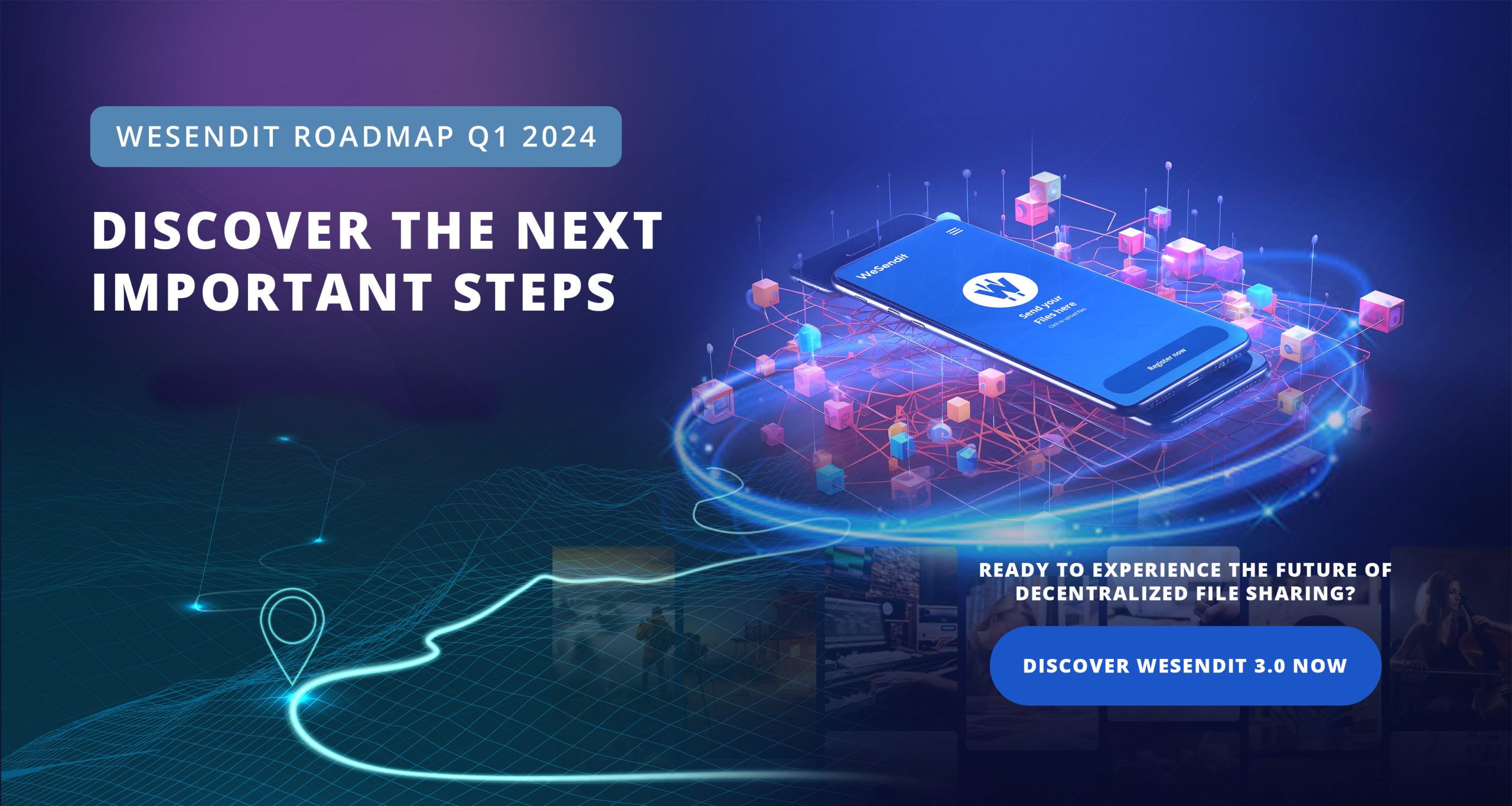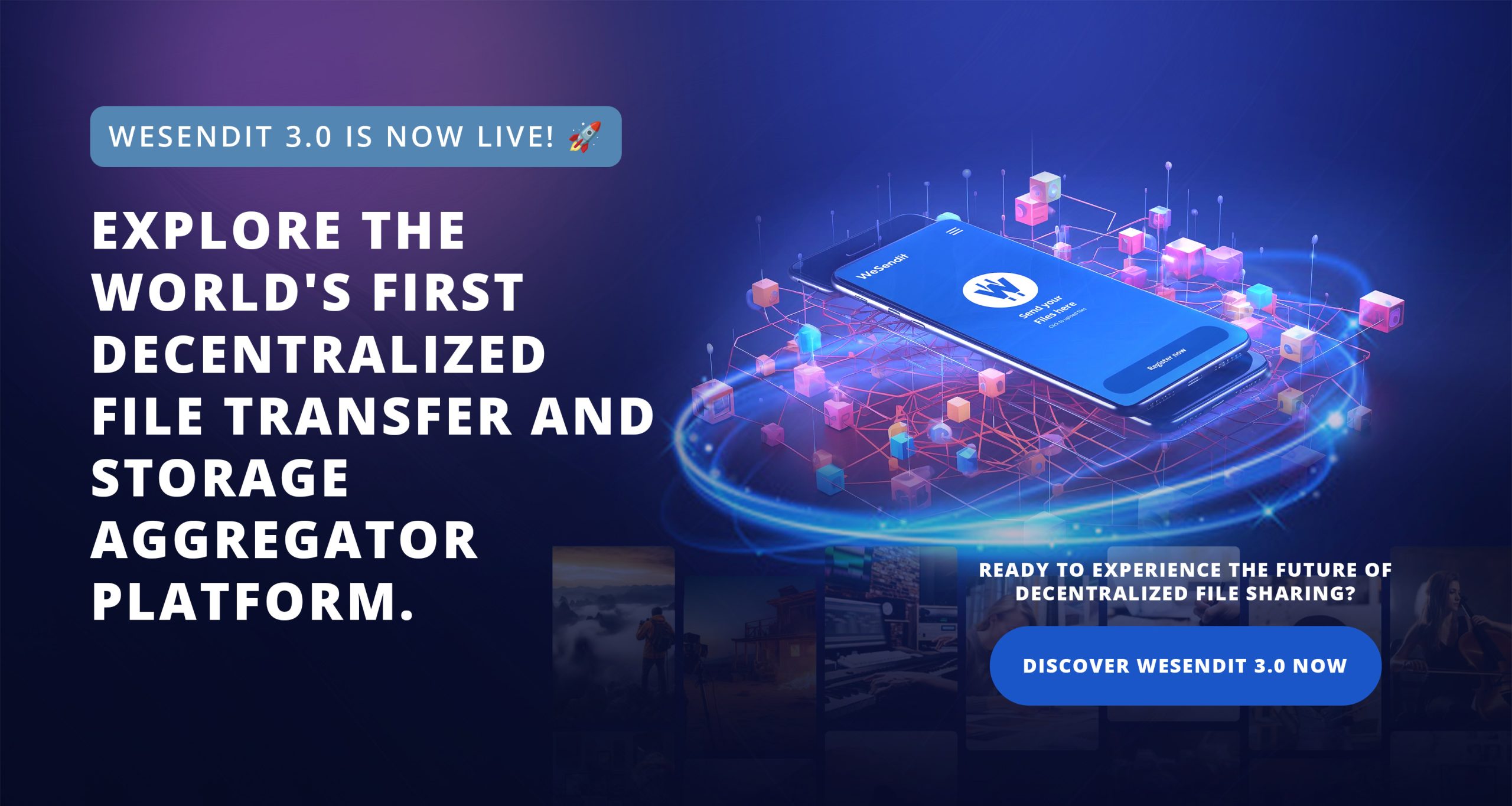Blockchain My Heart: How Decentralization Could Revolutionize AI
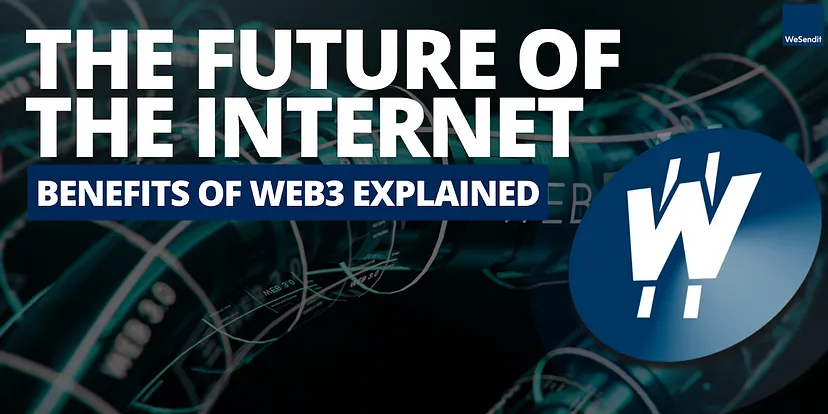
Introduction
While the whole world is going crazy over AI, most people focus on how it will revolutionize industry X, Y, and Z. Last time, we had a look at AI’s potential impact on crypto and the blockchain. However, it is always a good idea to change perspective and look at things from a different angle. That is why in today’s article, the latest in our WEB FREE series, we will answer the following question:
“How could blockchain improve AI?”
Yes, as mind-bogglingly powerful as AI is, the technology still has many flaws. Blockchain technology has certain characteristics that could mitigate AI’s weaknesses. Let’s look at a couple of them, in no particular order of importance or feasibility:
#1 — Privacy protection: Blockchain’s privacy protection could improve the training and supply of AI systems. On the blockchain, data is divided into smaller pieces and then dispersed around the network. There is no need for any central authority to govern your data and each computer maintains a complete copy of the ledger to prevent data loss. Therefore, blockchain is a great base layer for a strong data privacy ecosystem based on artificial intelligence.
#2 — Improved security: Blockchain’s decentralized, immutable nature can help improve the security of AI applications by preventing tampering and ensuring data integrity. Through leveraging decentralized consensus algorithms and encryption methods, the blockchain could help protect AI models and their data from various cyber threats.
#3 — Secure training data environment: As you probably know by now, large language models (LLMs) require huge amounts of high-quality data to learn and improve. The blockchain provides a secure, decentralized platform for data sharing. In this way, the blockchain could improve both the quality and the quantity of training data for AI systems, while keeping the data safe.
#4 — Transparency and accountability: Blockchain could increase the accountability of AI systems by acting as a transparent and unchangeable ledger. It records all actions and transactions, allowing you to trace the source of problems or errors. Its transparency and decentralized data storage provide valuable insights into (the still mostly) opaque AI systems. That way, blockchain could transform the “black box” perception of AI systems, making the decision-making process much more transparent and trustworthy.
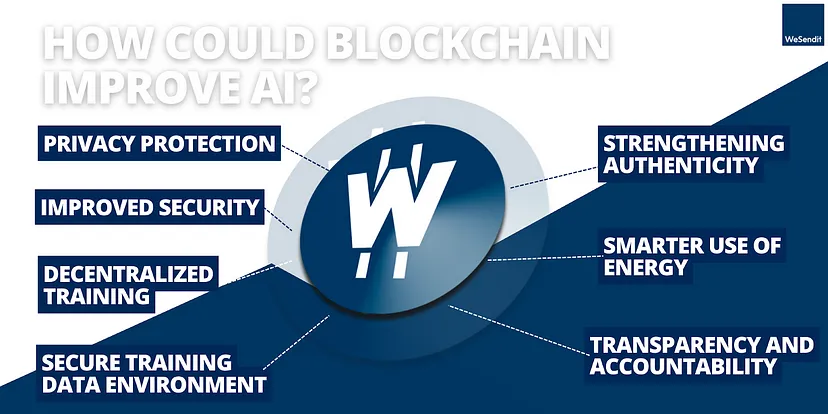
#5 — Smarter use of energy: AI’s intelligence might be artificial — its energy hunger is real: AI systems need a lot of computational power — and thus energy. Blockchain tech could provide a decentralized environment for processing and executing AI algorithms, reducing the burden on centralized servers and improving the overall speed and efficiency of AI systems.
#6: Decentralized Training: Blockchain can enable decentralized AI training by distributing the training process across a network of nodes. Each node contributes computational resources and participates in the training process. This decentralized approach avoids relying on a single centralized entity for training, making the process more resilient and less vulnerable to failures or attacks.
#7 — Strengthening Authenticity: Blockchain’s digital record provides insights into the AI framework and the origin of the data it uses. This could be a great step towards the desired “explainable” AI which would in turn greatly improve trust in AI’s outputs.
Blockchain and AI: “Is this the real life? Is this just fantasy?”
These are just a few examples of how blockchain could improve AI systems. Still a bit too abstract? Here are a few possible real world use cases:
FINANCE: Blockchain powered AI could improve financial transactions in different ways: It can enhance fraud detection and prevention mechanisms, thus increasing security and trust within the system. Risk Assessment and Portfolio Management are other areas in which blockchain could make possible safe and useful AI applications.
HEALTHCARE: Integrating blockchain and AI can address challenges related to healthcare data management, privacy, and interoperability. The blockchain can securely store and share patient data across multiple healthcare providers while maintaining data privacy and control. AI algorithms could analyze this data to extract valuable insights, support clinical decision-making, and enable a much more personalized medical treatment.
SUPPLY CHAIN MANAGEMENT: By leveraging blockchain’s decentralized and immutable ledger, combined with AI’s data analytics and prediction capabilities, you could track and verify the flow of goods, detect counterfeit products, optimize logistics, and automate various aspects of the supply chain.
ENERGY: Blockchain and AI could revolutionize energy grids by enabling decentralized energy trading, grid management, and optimization. Blockchain could facilitate peer-to-peer energy transactions, strengthening transparency, trustworthiness, and accountability. AI could analyze energy consumption patterns, predict demand, and optimize energy distribution. In combination, this would allow for efficient energy utilization and significant cost reductions.
DATA TRANSFER AND STORAGE: Decentralized file storage. Data integrity and verification. Secure access control. Reduced risk of data loss or downtime. File tracking and copyright protection. These are just a few ways in which blockchain-powered AI could improve data transfer and storage solutions.
At WeSendit, we are already discussing possible implementations and will make sure to integrate AI into our Web3 solutions as soon as possible.
OUTLOOK: Blockchain and AI — an unlikely dream team?
According to a recent PwC report, the blockchain could “boost global economic output by US$ 1.76 billion by 2030.”
Given the massive potential of both blockchain and AI technology, it seems only logical to combine them. There is simply too much data around today and AI-based automation will help make sense of it all.
The contrast between the transparent, decentralized blockchain and the centralized, “data-hungry” AI systems is striking, and yet a great chance to mitigate each other’s weaknesses.
While with AI, we might see the tendency of a concentration of power into the hands of a few corporations that source and process big data, blockchain will help individuals secure their personal data while enabling people to generate and exchange economic value.
To be fair, many of the possible applications we mention in this article still have to be explored in more detail and of course there will be challenges on the way. In any case, you can be sure that WeSendit is closely following scientific progress and will be ready to act swiftly in case the technology is ready to improve OUR solution.
In the future, any world class data transfer and storage solution will contain at least some elements of AI.
So will WeSendit.
Our new platform is taking form. Day by day. Step by step.
Stay tuned and keep on trusting the process.
About WeSendit
WeSendit is a Swiss file transfer provider with the experience of over 10 years in the market and more than 3.5 million users from 150 countries, including global players such as Nike, Red Bull or Dreamworks. WeSendit’s founder and CEO Jens Herbst has built an international team of crypto experts, developers, business strategists, and marketing specialists. Together, they are working to become a Web3 pioneer with WeSendit 3.0. The new platform, in combination with the $WSI token, will harness the power of the blockchain and support the world’s transition to the decentralized Web3 — the more secure, trustworthy, and private internet of the future.
Visit https://discover.wesendit.com/ for more information on the project.
Check out the WeSendit 3.0 here.
Twitter | Instagram | Youtube | Linkedin | Telegram | Medium
